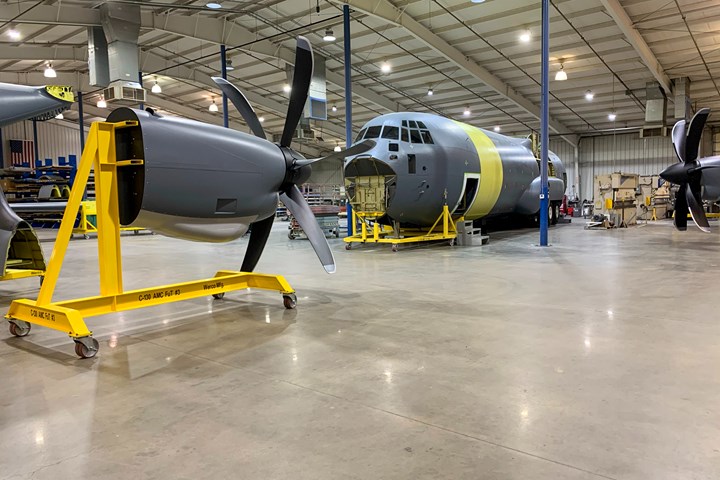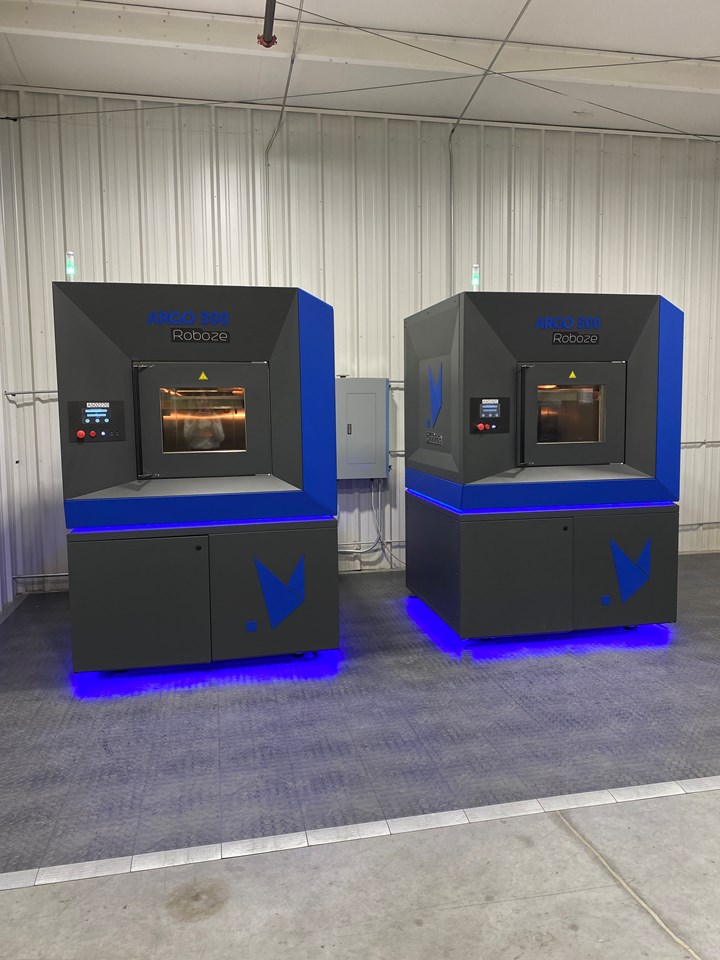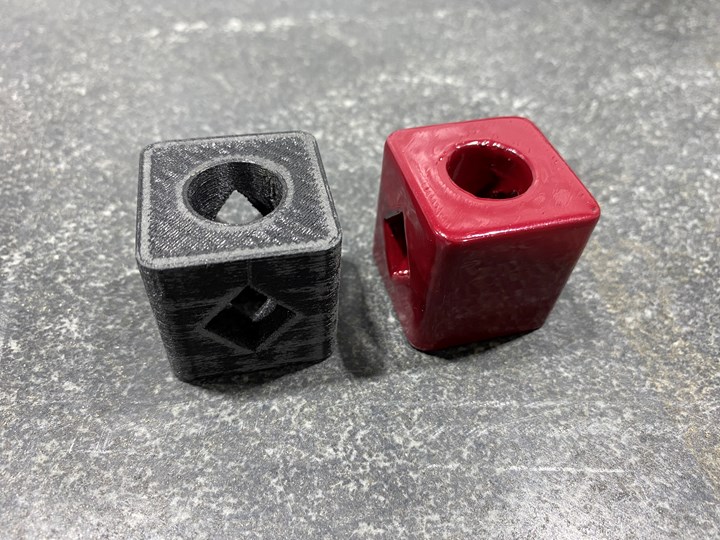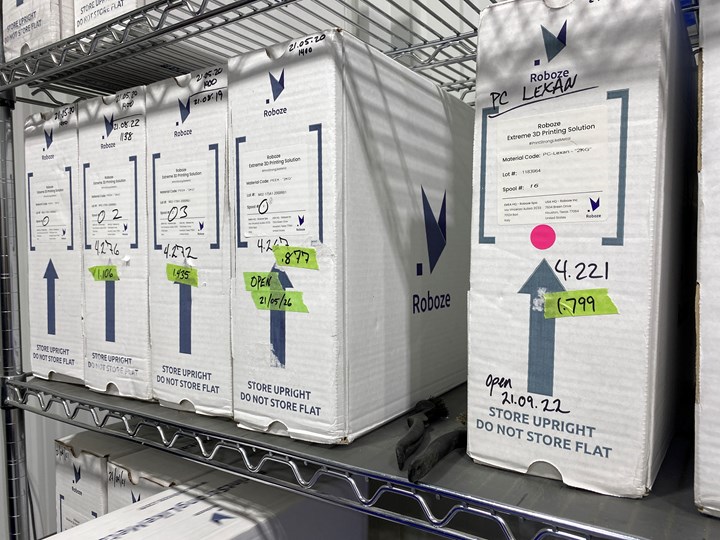Introduction: PEEK, carbon fiber composites and
ceramics
Fiber composites have temperature resistance, mechanical shock resistance, and chemical resistance similar to metals.Parts made from these polymers and composites have many excellent properties, so use3D printingIs it feasible to replace traditionally manufactured metal parts with high-performance polymer materials and composite parts?
Werco Manufacturing

△Aircraft and propellers
Werco Manufacturing is located in Oklahoma and is designed for
aviation
aerospace
and defense for component manufacturing. In 2020, Werco Manufacturing has two Roboze Argo 500s 3D printingThe machine is capable of 3D printing manufacturing, as well as sheet metal fabrication, welding, CNC machining and part finishing. 70% of Werco Manufacturing’s manufacturing tasks come from the military, and the rest are commercial airlines.
Werco not only manufactures end-use parts for aerospace and defense, but also specializes in aircraft training equipment (or “trainers”). Andy Bartovick, chief operating officer of Werco, said: “We can make ‘trainers’ of all the components in the cockpit. These trainers can be as large and complex as the fuselage of an aircraft, or as simple as a few assembled parts. The customer first tells Werco’s final product requirements, including whether it needs to be low-fidelity, mid-fidelity, or high-fidelity, and the manufacturing shop produces the trainer according to those requirements.”
Tip: Trainer is a special type of aircraft that trains pilots from the most basic flying skills to the ability to fly alone and complete designated tasks. Pilots, whether operating military or civilian aircraft, go through some of the same training procedures, using similar trainers to complete basic flight courses.
High-fidelity trainers need to be as close to the actual aircraft as possible in terms of performance, appearance, etc. They are usually made from recycled aircraft parts. But Antarctic bears have learned that aircraft parts that can be recycled are becoming harder to come by. Bartovick pointed out that the Air Force is looking for ways to extend the life cycle of the aircraft. There are currently two or three aircraft that should be retired in a few years, but the Air Force has extended the life of these aircraft by another 10 years, 15 years or more. But even when they reach their end of life, before they can finally be recycled, the military will usually take the parts that can be used and pass them through the MRO process (Maintenance, Repair, Operations, which can be called an equipment management system, or a The main function of the maintenance system is to re-use these parts during the production process, such as receiving, maintaining inventory, repairing, updating and replacing the equipment, so the parts that can actually be recycled in the end are usually unavailable, and the same is true for commercial aircraft, and When recycling, there is also the risk of extended lead times. “
Recycling aircraft parts is getting harder and harder, but there are new technologies that can solve this problem. This technology is 3D printing! 3D printing is ideal for printing aircraft parts because these parts are often small and do not require mass production. Recycling, transformation, manufacturing and other links are no longer required, which greatly improves the manufacturing efficiency.
Roboze Argo 500 3D Printer

△ Two Roboze Argo 500 3D printers
Werco has not introducedMetal 3D Printingmachine, but it can produce non-metal parts with similar performance to metal parts, why?
The answer is that Werco added two Roboze Argo 500s 3D printerManufacture of aircraft parts. Using high-performance materials such as PEEK and carbon fiber PEEK composites, these printers are capable of producing non-metallic parts that perform similarly to metal parts.
Bartovick points out that functional parts in sneakers often wear out a lot. Traditional polymers are not durable enough for these types of applications, but high-performance polymers such as PEEK and composites such as carbon PEEK are durable enough. High-performance polymer materials can be used not only in this field of life, but also in aircraft parts. The biggest highlight of Roboze printers is the ability to use these high-performance materials for parts manufacturing. It can be said that the Roboze Argo 500 was born for the use of high-performance materials. It has a printing chamber and printing plate that can heat work, as well as a filament drying and preheating system. Ensuring users can print high-performance polymers and composites accurately and consistently.
better faster stronger
The Werco Manufacturing Center is capable of machining carbon fiber PEEK parts with a lathe or mill. This has many advantages. On the one hand, the desired parts can be obtained faster and more easily through the combination of additive manufacturing and subtractive manufacturing. On the other hand, removing the support of the 3D printed part by machining can reduce the error and make the part have high precision. Antarctic Bear learned that as long as the 3D printed part can be fixed and is solid (or near-solid), machining it is as easy as machining a metal part.

△ 3D printed carbon fiber PEEK parts and 3D printed carbon fiber PEEK parts with powder coating.
Carbon fiber PEEK is stronger, more heat-resistant than traditional polymers like ABS, and can be processed like metal. The outer layers of carbon fiber PEEK parts can also be powder coated, giving them higher heat resistance and the ability to retain negative charges.
These composite parts are easier to powder coat than traditional polymer parts. Bartovick points out that many of the “trainer” 3D printed parts are painted. The painting process for 3D printed parts is the same as for metal parts, but special care needs to be taken when painting traditional materials such as ABS and PLA. The temperature of the paint room cannot be too high, because traditional materials have lower heat resistance, while PEEK and carbon fiber The heat resistance of PEEK is high enough that there is no need to worry about the temperature of the spray booth being too high.
Experience in reducing printing costs
Werco has high performance materials3D printerFor nearly two years, Bartovick said Werco has had significant experience reducing printing costs. 3D printed parts using high-performance materials are expensive, and in some application scenarios, parts with such excellent performance are not required. If all parts use high-performance materials, the price of the finished product will eventually be too high.So Werco brought in
standard
The high-quality ABS and PLA materials enable Argo to print not only high-performance materials, but also standard tapes, reducing production costs and making the printer’s application field wider.

△ Filament box marked with weight
Since most parts are printed in high-performance materials, Werco organizes production based on the amount of material remaining on the spool. Bartovick pointed out that high-performance filament is expensive, so it is not desirable to have a situation where one reel does not have enough filament and another reel has leftover filament. Such “out-of-sync” can cause print failures and increase manufacturing costs. . Werco judges how well a part is printing by the amount of filament on the spool.Antarctic bears learn that Roboze is developing
software
allowing users to switch intermediate filament rolls without affecting part printing, and Werco is working to find a way to fuse the smaller filaments together and rewind them.
Outlook
Bartovick says Werco runs both 3D printers nearly every day due to the sheer volume of tasks currently involved in making end-use parts, in-house tooling products, and prototype/test parts. So Werco is considering using the Roboze Argo 1000 (print volume: 1,000 x 1,000 x 1,000 mm) to print larger parts. Instead of having to print smaller parts, a fabrication center can directly manufacture larger parts by assembling and painting larger parts. Werco also hopes to use new high-performance materials, including Helios PEEK 2005 reinforced with chopped ceramic fibers.This material will have higher thermal performance and high surface finish, making
post-processing
Operations are greatly reduced.
Werco hopes to translate its success with 3D printing trainers into 3D printing on actual aircraft. Bartovick believes that carbon fiber PEEK has excellent mechanical shock resistance, heat resistance and chemical resistance, and can replace metal parts. These parts can be machined to ensure exacting precision and painted or coated just like metal parts. He also noted that carbon fiber PEEK parts require less post-processing than 3D printed metal parts.
Werco has noticed the need for low-volume and one-off parts in the aerospace sector. “The Tinker Air Force in Oklahoma City just provided a spare parts list, a 70-page Excel spreadsheet of parts that were difficult to obtain for a number of reasons, and either didn’t have the corresponding supply,” Bartovick said. quotient, or it’s overly complicated. So we’re looking at that list, hopefully we can use3D printing technologyManufacture parts to specification. “
Compile source:
https://www.additivemanufacturin…-printed-composites
(responsible editor: admin)


0 Comments for “Werco 3D prints PEEK and carbon fiber composites to replace traditionally fabricated metal parts”